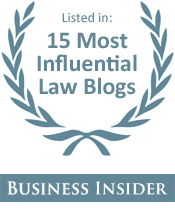Whistleblower Law Blog
Supreme Court to Hear Key Employment Law Cases in October 2015 Term
While Supreme Court analysts are still considering the impacts of a number of rulings from the Supreme Court’s October 2014 term, including an important ruling for religious accommodation of employees under Title VII in E.E.O.C. v. Abercrombie & Fitch Stores, the Court has already granted certiorari in a number of cases that could have sweeping impacts on employment law.
In Tyson Foods v. Bouaphakeo, the Court will examine what effect, if any, differences in individual members of classes certified under a class action lawsuit or collective action suit under the Fair Labor Standards Act should have when damages are calculated by use of statistical sampling. In this case, a class of workers in a meat processing plant seek unpaid overtime for the time spent each day to put on (donning) and remove (doffing) protective equipment before and after shifts and before and after lunch breaks. To prove liability and damages at trial, the plaintiffs presented timesheets for the individual plaintiffs as well as average donning and doffing times derived from observations of more than 700 employees. The Eighth Circuit affirmed the use of statistical sampling in this case because the plaintiffs all worked in the same location, used similar equipment to perform their jobs, and the company used a common pay scheme regarding their “donning and doffing” times. The Eighth Circuit also pointed to the fact that since the company had failed to keep adequate records of specific times spent on “donning and doffing” for each specific plaintiff, reasonable inferences drawn from average times and individual timesheets were sufficient.
In Bouaphakeo, the Supreme Court will also examine whether class certification should survive when some members of the class suffered no actual damages from the employer’s activities. This case will be important for determining the outcomes of future cases involving unpaid overtime and employee misclassification, especially given the increase in these types of claims in recent years.
The Court will also examine the doctrine of “constructive discharge,” in which an employee is not actually terminated but alleges her employer forced her to resign through the creation of a hostile work environment such that her resignation was not truly voluntary. In Green v. Donahoe, the Court will address a circuit split as to whether the time period for filing a claim for constructive discharge commences when the employee resigns (as held by the First, Second, Fourth, Eighth, and Ninth Circuits) or when the last alleged act giving rise to the resignation occurred (as held by the Seventh, Tenth, and D.C. Circuits). This case will provide important guidance to plaintiffs in employment discrimination suits on claims of constructive discharge and will also significantly affect the ability of employers to raise statutes of limitations bars. The National Employment Lawyers Association (NELA), in which attorneys at The Employment Law Group are members, filed an amicus brief in this case on July 13, 2015, arguing that the majority approach (the time commences when the employee resigns) should be adopted.
Another case before the Court in the coming term, DIRECTV v. Imburgia, will examine whether “a reference to state law in an arbitration agreement governed by the Federal Arbitration Act requires the application of state law preempted by the Federal Arbitration Act.” In Imburgia, the California Court of Appeal examined a provision in an arbitration agreement which barred class actions, but stated: “If, however, the law of your state would find this agreement to dispense with class arbitration procedures unenforceable, then this entire Section 9 is unenforceable.” Imburgia v. DIRECTV, 170 Cal.Rptr.3d 190, 193 (Cal. Ct. App. 2014). The California Court of Appeal found the provision meant that the arbitration agreement provision should be examined in light of “the law of [the aggrieved party’s] state without considering the preemptive effect, if any, of the FAA.” Id. at 195. Although this is not an employment case, its outcome could affect employees who sign similar arbitration agreements with employers.
In Friedrichs v. California Teachers Association, the Court will examine the constitutionality of “agency shop” agreements, in which public school employees are required to join the recognized labor union for a school district’s employees or pay a service fee. The Supreme Court will also hear two cases involving the Employee Retirement and Income Security Act (ERISA): Montanille v. Board of Trustees of the National Elevator Industry Health Benefit Plan and Gobeille v. Liberty Mutual Insurance Company.
The Supreme Court is likely to take more cases next term that will impact the field of employment law. However, the cases that are already docketed promise to have significant effects on the ability of employees to litigate claims against their employers.
Tagged: Title VII of the Civil Rights Act of 1964



